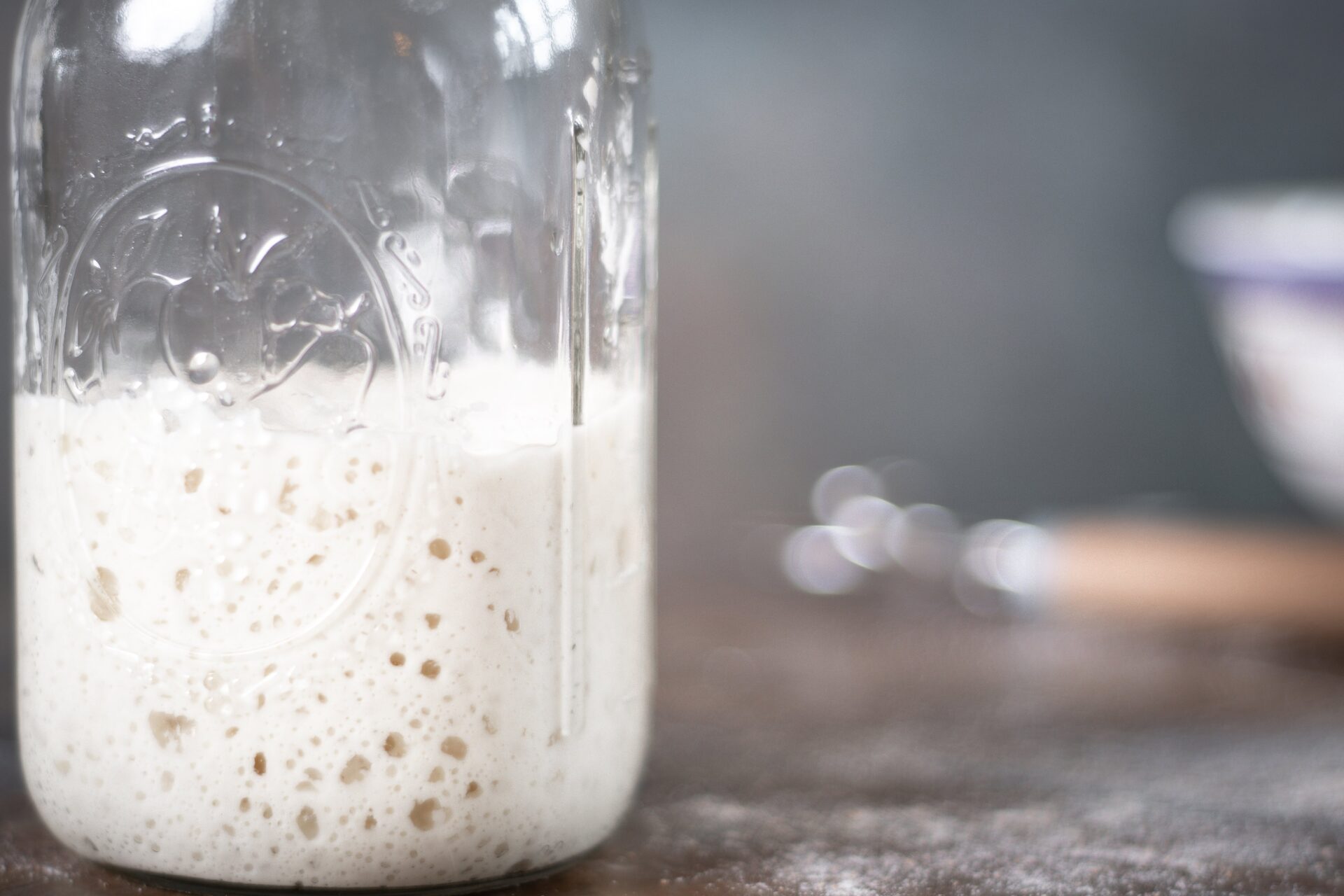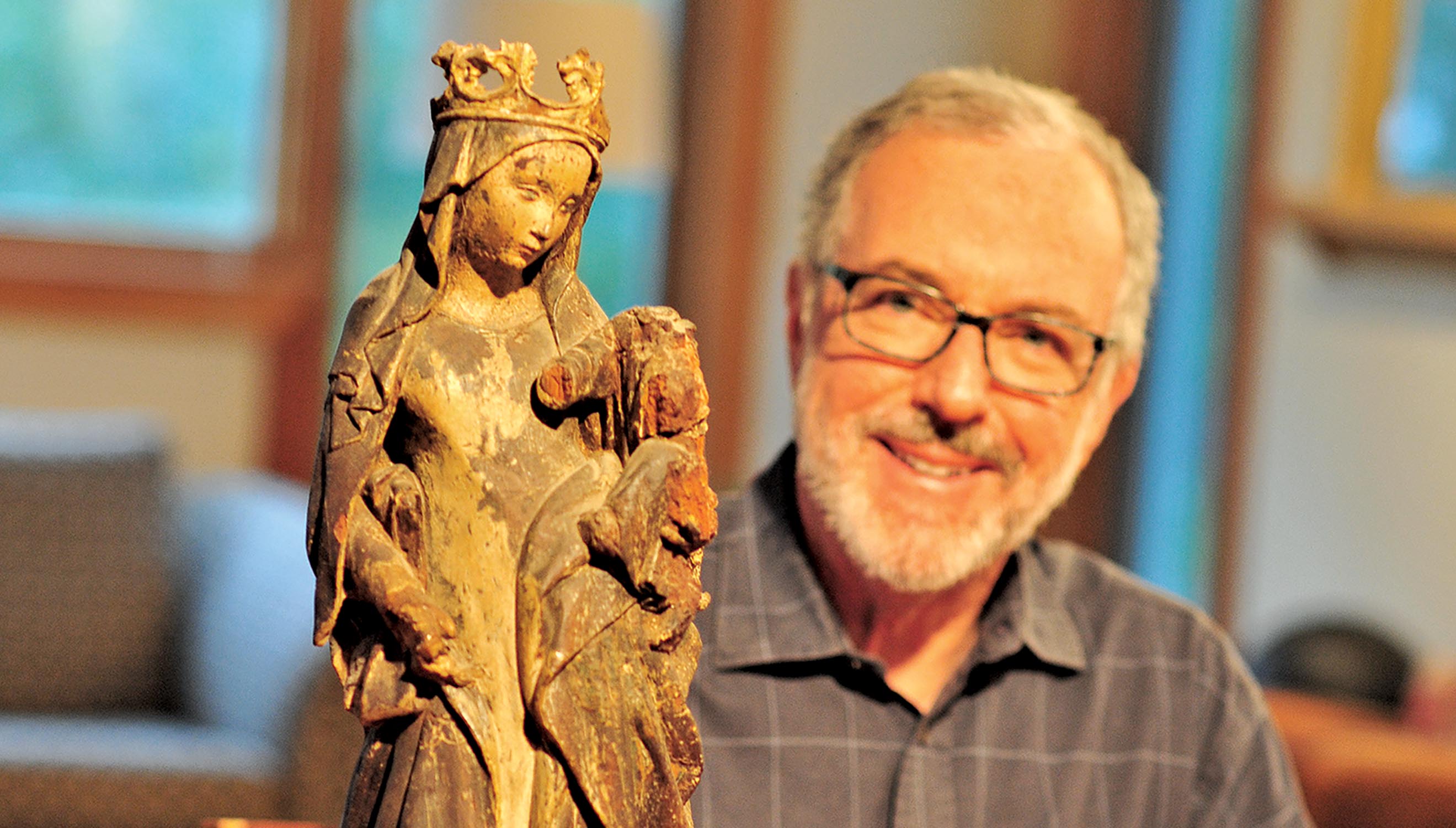Make Your Own Sourdough Starter

Recipe courtesy Eric Pallant ’80; photo by John Mangine
To make your own starter, you need only repeat what ancient bakers discovered entirely by accident. The precise measurements are not essential. You are reproducing a technique that is six thousand years old. Because microbial populations increase rapidly, demanding more and more food to stay alive, most modern descriptions for starting a starter advise you to discard some mixture daily to avoid doubling your feedings as the size of your microbial population also doubles. The following is a simple recipe to make your own starter.
Ingredients
3 cups white bread flour
3 cups whole wheat flour
Water, room temperature or 80 degrees Fahrenheit (to speed things along)
Day 1. In a large bowl, mix together the white bread flour and whole wheat flour. Set aside and store flour mixture; this will be the food stock for your growing population of microbes.
To rouse your microbes from their dormancy, place ½ cup of the flour mixture and ⅓ cup of water into a small bowl. Use your hands to mix them together.
Cover the bowl with plastic wrap to keep it from drying out. Place the bowl in a warm location, out of direct sunlight, for three days, or until bubbles form on top of the mixture and the dough puffs. This will happen more quickly in warm temperatures.
Day 3. Remove the cover from the bowl. Discard or compost about 80 percent of the mixture. Feed it with ⅓ cup of the reserved flour mixture and 4 tablespoons of water. Stir or mix by hand.
Cover the bowl again and place in a warm location, out of direct sunlight, for 24 hours.
Days 4–10 (more or less). At about the same time every day, repeat the steps from day 3. Depending on the temperature of your house and the serendipity of the species of yeast and bacteria that colonize your starter, after a week has passed, your culture should start to rise and fall every day. There will be bubbles of carbon dioxide visible throughout the starter and on the surface and a black liquid called hooch may begin to collect. It should begin to smell sour.
To bake or store. When your starter rises and falls with regularity and smells sour, store it in the fridge in a lightly sealed container. To bake with it, take your starter from the fridge and feed it with roughly a 3:2 ratio of flour to water. For example, in a 1-quart mason jar, mix 1 cup of water with your starter. Stir. Then add 1½ cups of flour. Mix. In 12 hours, it will be ready to use in a recipe. Remember: Save ½–1 cup of starter from your new mixture to return to the fridge for use in a later bake.
Photo by John Mangine
Ready to start baking? Try a Simple Country Sourdough Bread Recipe or find more recipes and information in Sourdough Culture by Eric Pallant. Read more about Pallant and other Wesleyans taking an interdisciplinary approach to food in Life Is Like a Sourdough Starter.



